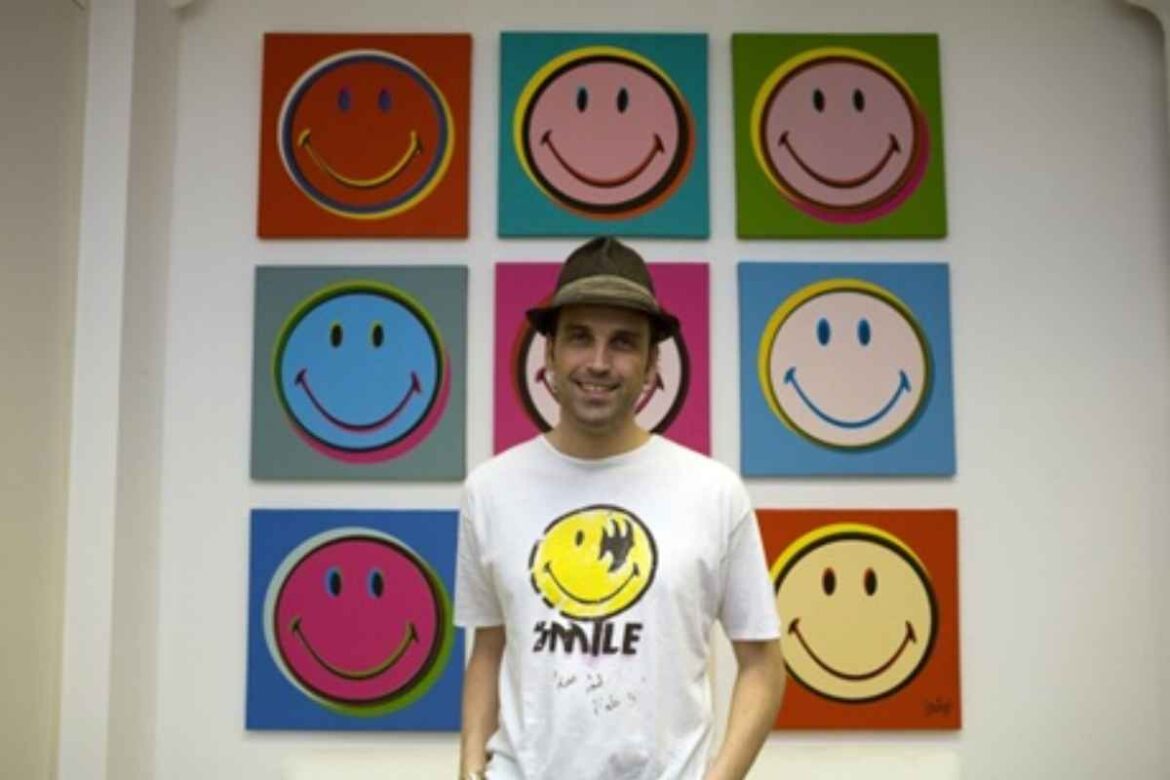Table of Contents
Franklin Loufrani: The Smiley Company’s ‘Take the Time to Smile’ Campaign
In 1972, French journalist Franklin Loufrani created Smiley, the trademark of optimism and positivity, as part of the ‘Take the Time to Smile’ feel-good campaign published on the front page of France-Soir. Mr Loufrani, Smiley face owner and creator, went on to launch the Smiley Company, an organisation that established itself as one of the world’s largest licensing companies.
Upon joining the company, Nicolas Loufrani built on the legacy created by his father by establishing iterations of the Smiley logo, each with different facial expressions. Today, Smiley is universally recognised as a visual representation of positivity, making the world a kinder, happier place by spreading smiles.
The Smiley Company has always recognised the power of a smile to help manifest a better, more positive future, even during difficult times. On the 50th anniversary of Smiley’s launch, the Smiley Company launched its ‘Take the Time to Smile 2.0’ campaign, leveraging a universally powerful means of cultivating more compassion, gratitude and loving energy around the world.
The power of the smile is rooted in science, with researchers having shown that this simple act boosts serotonin levels, which has a tangible impact on wellbeing. The ultimate expression of empathy, smiles spread joy throughout society. However, despite 80% of respondents agreeing that smiling improves their overall sense of wellbeing, people have been smiling less of late, the Smiley Company’s Smile Index suggests.
A globally recognised brand promoting positivity embraced by numerous generations, Smiley has been appropriated by various movements, incorporated in graphic design, Hollywood movies and even fine art. All around the world, creatives have kept Smiley alive by weaving it into the cultural fabric of physical and virtual worlds. Repeatedly reinvented by new generations of artists, creators and activists it collaborates with, Smiley continues to thrive, providing a figurehead for various movements and influencing future generations.
To mark the 50th anniversary of Smiley’s inception, the Smiley Company paid tribute to the many fantastic artists who have subverted this iconic logo over the course of the last half a century. The brand invited the celebrated graffiti artist André Saraiva to reimagine its logo, drawing on his lifelong love of Parisian street art. Known for his alter ego, Mr A, André Saraiva pioneered the French capital’s early graffiti movement. Over the years, Saraiva’s talent has been showcased by numerous world-class museums, galleries and shows.
In addition to his work as a graffiti artist, André Saraiva owned nightclubs in Paris, London, New York City, Los Angeles, St Tropez, Shanghai and Tokyo. He also works as a creative director for the French fashion magazine L’Officiel. André Saraiva has partnered with global brands like Chanel, Off-White, Uniglo, L’Oreal and Louis Vuitton. Even as a successful nightclub owner, hotelier and restaurateur, Saraiva has retained his passion for graffiti, drawing on his experiences as a street artist to encapsulate the Smiley brand’s boundless positivity.
Following an era of unimaginable change, André Saraiva’s reimagining of Smiley conveys its message of positivity with particular resonance. Reflecting on Smiley as part of the rave scene in the early 1990s, André Saraiva points out that it grew to become a stronger counterculture icon, explaining that ‘we all have our own connection to it.’ Describing his collaboration with the Smiley Company as ‘Mr A meeting his big brother Smiley’, André Saraiva pointed out that no other logo in the history of graphic design has had such dual-functionality, serving as both a countercultural subversive icon and a mainstream brand.
As part of the campaign, a never-seen-before global street manifesto featuring arts and culture will be staged in Berlin, London, New York, Paris, Milan and various other locations, introducing the collaboration with André Saraiva to the public and spreading smiles and positivity.



